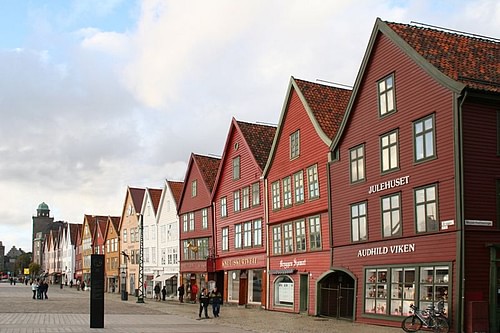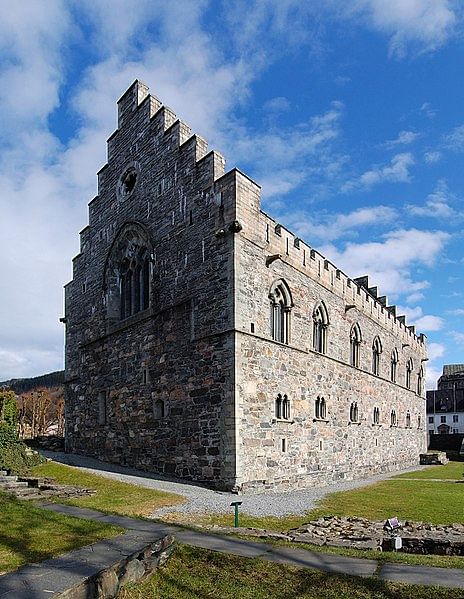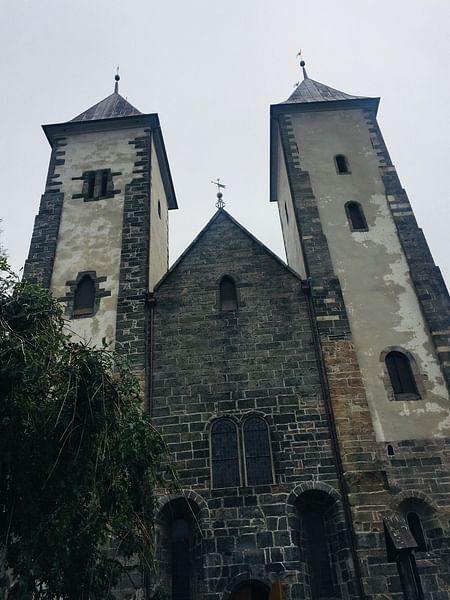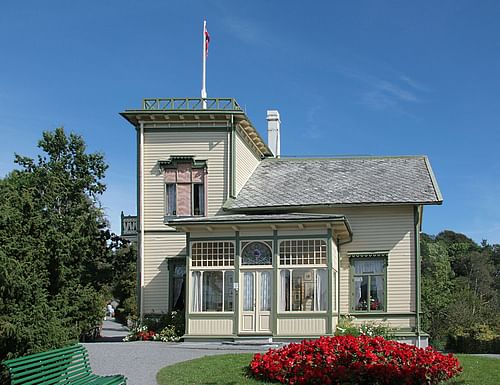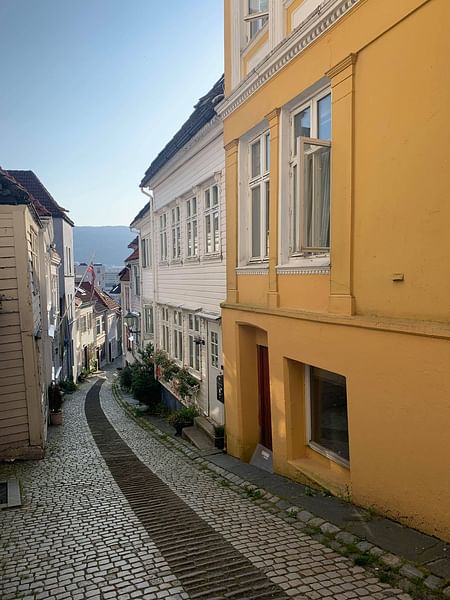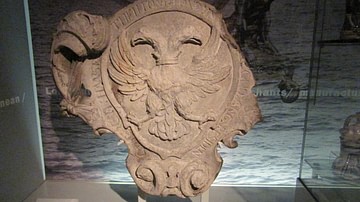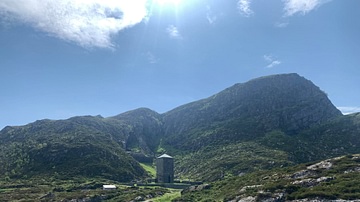Bergen is a lively, historic city located on the west coast of Norway. Known for its history as a Hanseatic trading town of fish from the north, Bergen has much to offer those who visit. The most famous site is the colorful "Bryggen" or German Dock, which is a UNESCO World Heritage site.
Visiting Medieval Bergen
Bergen, also known historically as Bjørgvin, is believed to have been established by Olaf III of Norway (r. 1067-1093). Olaf III was also known as Olaf Kyrre and one of the earliest kings of the newly unified kingdom of Norway following the Viking Age and the Christianization of Norway. Bergen has been one of the most important cities in Norway since its foundation, especially considering trade and contact with the world outside Scandinavia. Luckily for tourists and inhabitants today, parts of the city established at the beginning of the 2nd millennium CE are still standing and can be visited.
The Haakon's Hall is one of the oldest buildings in Bergen and the symbol of the monarchy in the city. The medieval royal residence and banquet hall was built from stone during the 13th century by Haakon IV of Norway (aka Håkon Håkonsson, r. 1217-1263), and up until today, it was used for national sermons and celebrations. Today, the hall is open to visitors most days, and one can only try to envision all the exciting events and people who have left their memories inside the stone building.
Next to Haakon's Hall is the Rosenkrantz Tower, an important and visible stone monument in the city. Most parts of the tower date from c. 1560, but fractions also date back to the 1270s. Like Haakon's Hall, the tower was a part of the larger Bergen castle or fort known as Bergenhus and was both a part of the fort and served as a residence. For example, Eric II of Norway (aka Eirik Magnusson, r. 1280-1299) is believed to have held residence here as the last king to hold his court in Bergen. The cellar also functioned as the fort's dungeon. For those visiting today, it is possible to study parts of the historic interior still preserved on the walls in the different rooms and enjoy the magnificent view of the town from the top of the tower.
The most important medieval church would have been Christ Church, located close to the Haakon's Hall, but this monument has been lost. However, it is a monument at the site dedicated to St. Sunniva (10th century), the patron saint of the Diocese of Bjørgvin. Today, the most important historical church is St. Mary's. The church is Bergen's parish church and the oldest surviving building in the city. St. Mary's church was constructed between 1130 and 1170. There are many beautiful decorations to study, including medieval portals, the reredos, and the pulpit. Unique for the church in the Norwegian context is also the two towers on the west side of the church.
For those eager to learn more about the early history of Bjørgvin, it is recommended to visit the Bryggens Museum. Both archaeological findings from Bergen and the wider west coast region, as well as ruins from the foundations of some of the oldest buildings in the city, can be explored here. At the museum, you can also see parts of the "Bryggen Inscriptions" on display. These are runes on wooden staffs, giving insight into the daily life of people living and loving in Bergen during the Middle Ages. The runic alphabet was in use until the 14th century.
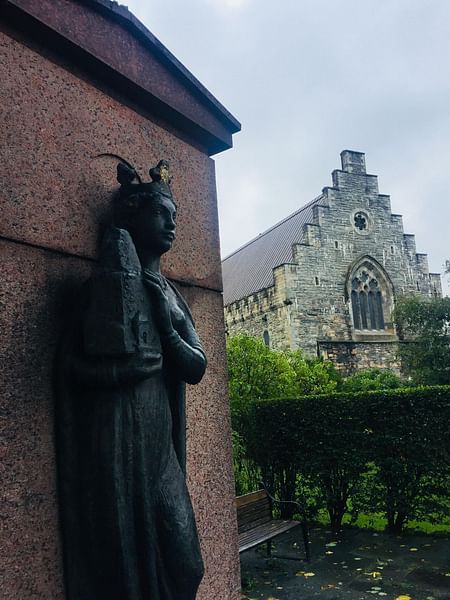
Hanseatic Bergen & Bryggen
The most famous part of Bergen's history is the Hanseatic trade of stockfish from the north of Norway. The name for the historic and Hanseatic quarter of Bergen is Bryggen, which would translate to "The Wharf" or "The Dock". Bryggen is colorful with its preserved wooden houses that once served as merchant buildings for the Hanseatic traders. Today, many buildings are still bustling with small shops, cafes, and restaurants and are free to explore. Walking the narrow pathways between the buildings feels like traveling back to another time.
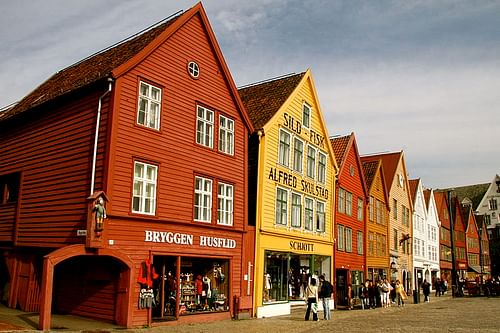
The Hanseatic League established one of its main offices in Bergen around 1360. For centuries, the league had a monopoly on exporting stockfish from northern Norway to the European market. The Hanseatic office, also known as the "German office," was dismantled in the middle of the 18th century, making the Hanseatic period in Bergen one of the longest. In 1979, Bryggen became listed on the UNESCO World Heritage List, and today, the quarter is one of the most visited attractions in Norway.
It is recommended to visit the Hanseatic Museum and Schøtstuene to learn more about life in Hanseatic Bergen. You can explore objects from the long Hanseatic period and learn about the merchants' impact on the town. Different rooms are preserved from different periods and give insight into the work and everyday life of the merchants and others who once lived there. In the Schøtstuene, you will also experience the traditional assembly room of medieval Bergen and the Hanseatic merchants. Here they shared food and drink, and it was also one of the few rooms where a fireplace was allowed as there was a significant fire risk.
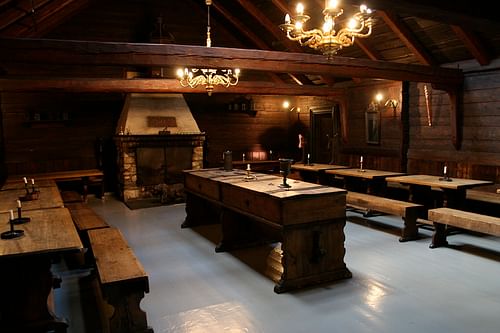
Bergen was famous for its stockfish, but to the locals, a variety of fresh fish has been available to access at the traditional Fish Market for centuries. One of the oldest fish markets in the world believed to have been established during the 13th century, the market is a must-visit for any visitor to Bergen. Today's market is modernized and includes a food hall, but the rich heritage can still be felt.
Edvard Grieg’s Bergen
One frequent visitor to the fish market during the 19th century would have been Edvard Grieg (1843-1907). Grieg is Norway's most famous composer, known for his romantic symphonies. Inspired by Norwegian folk music, his music is celebrated for capturing the sound of the landscape and Norwegian nature. Grieg grew up in Bergen in a family of prosperous merchants. After starting his music career, he traveled around Europe but eventually settled at Troldhaugen with his wife just outside Bergen's city center. Preserved from Grieg's lifetime in the late 19th and early 20th century, Troldhaugen is like a time capsule. With stunning scenery and overlooking a lake, Troldhaugen and the Grieg Museum located nearby is recommended for anyone, whether familiar with Grieg's music or not.
For the remainder of your visit to Bergen, walk through the city's charming neighborhoods, many still containing traditional wood houses. Explore the narrow alleys or "samu" and take the famous Fløibanen funicular to get a good view of the city or hike up the mountain. Bergen is lovely to visit all year round, but the surroundings are especially magical in the fall when all the trees are dressed in their beautiful colors. If you visit later in the fall, winter, or early spring, you will avoid the tourist crowds. However, you must always be prepared for the famous rainy weather, a 'mandatory' experience when visiting Bergen. Luckily, if the weather is not too inviting, there are countless tempting restaurants and cafes, in addition to the museums and galleries, that will shelter you from the rain and keep you warm and dry. It is strongly recommended to try some of the traditional Norwegian dishes at one of the many authentic restaurants in the city or, of course, from the Fish Market.

